Tofu: The Hard (& Soft) Facts
Japan is the land of tofu, and its deliciousness here will make you forget any horrible dishes that you might have encountered abroad. However, your first visit to the supermarket to buy tofu can be overwhelming. Read on for a guide on how to decipher those tiny white boxes and always choose the perfect tofu for any occasion!
By Diletta FabianiOther Kinds of Tofu
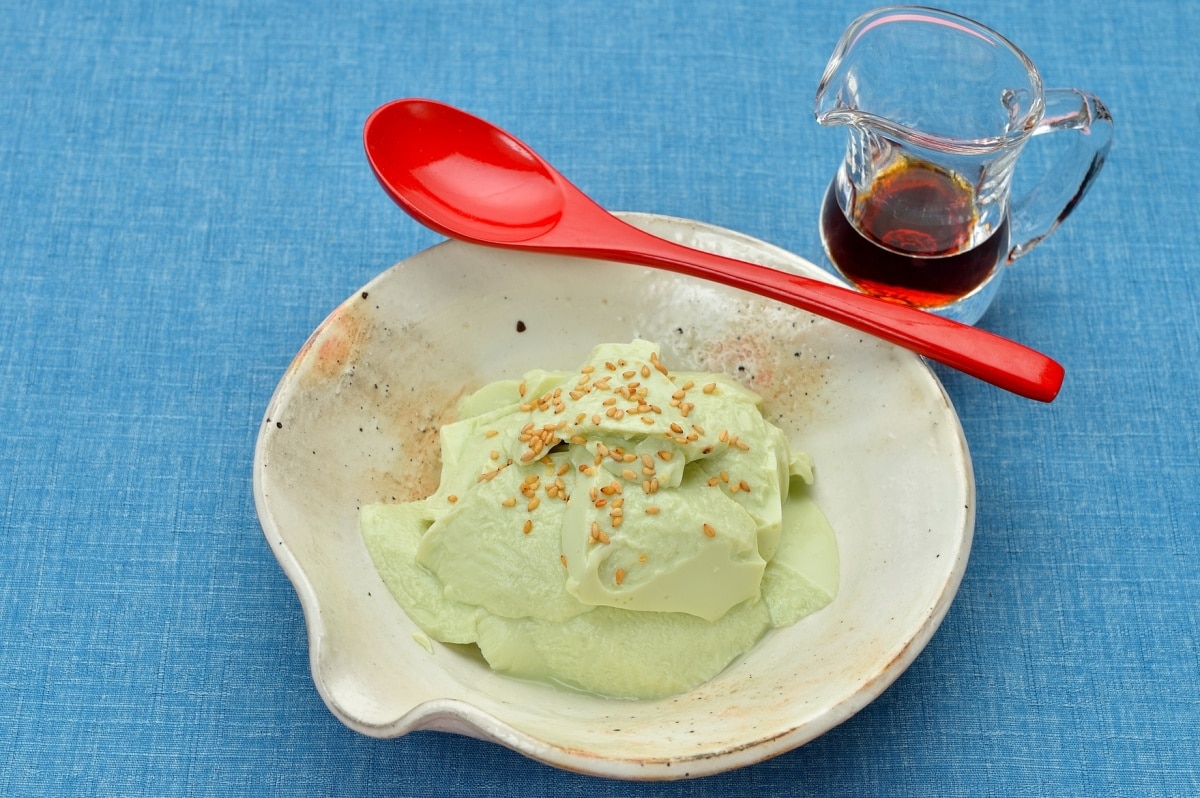
Let's now explore other variants that you might find at the nearest supermarket, or as local specialities around Japan!
'Yakidofu'
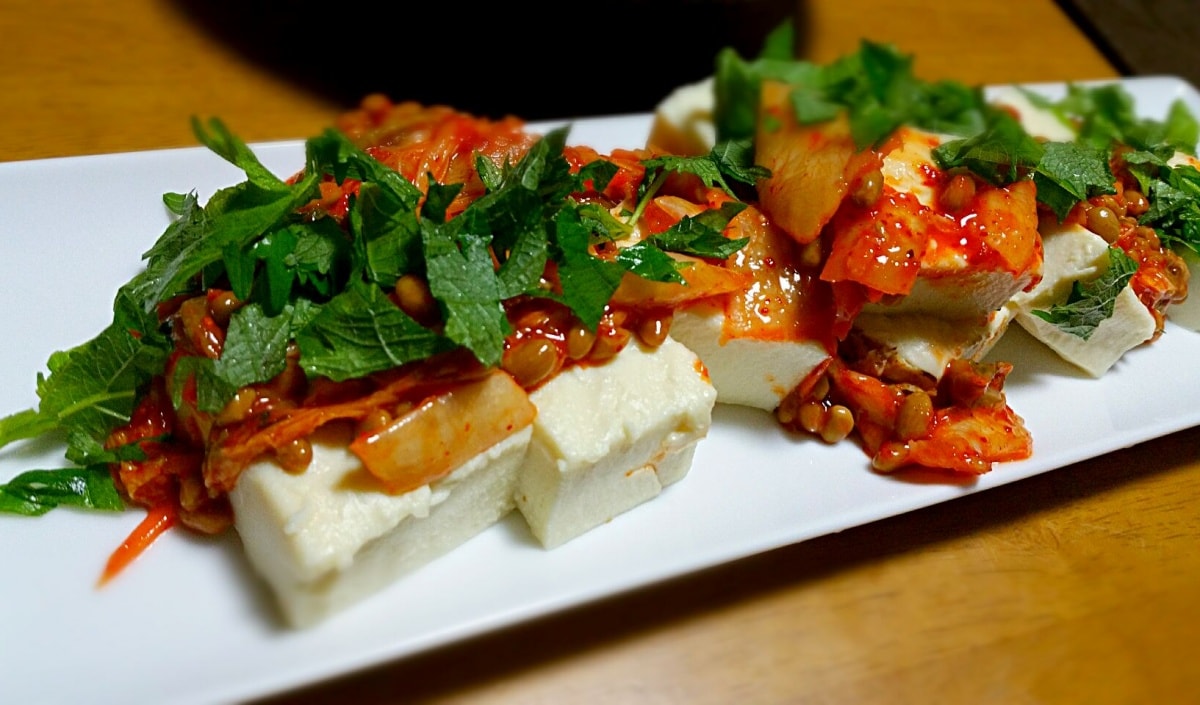
https://snapdish.co/d/5fO5ia
Yakidofu (焼き豆腐) is simply firm tofu that has been grilled. However, given the fact that most Japanese kitchens in big cities might not even have a place to grill, it’s conveniently sold pre-grilled at supermarkets, usually with the word 焼 or やき (yaki) written on it.
'Koyadofu'
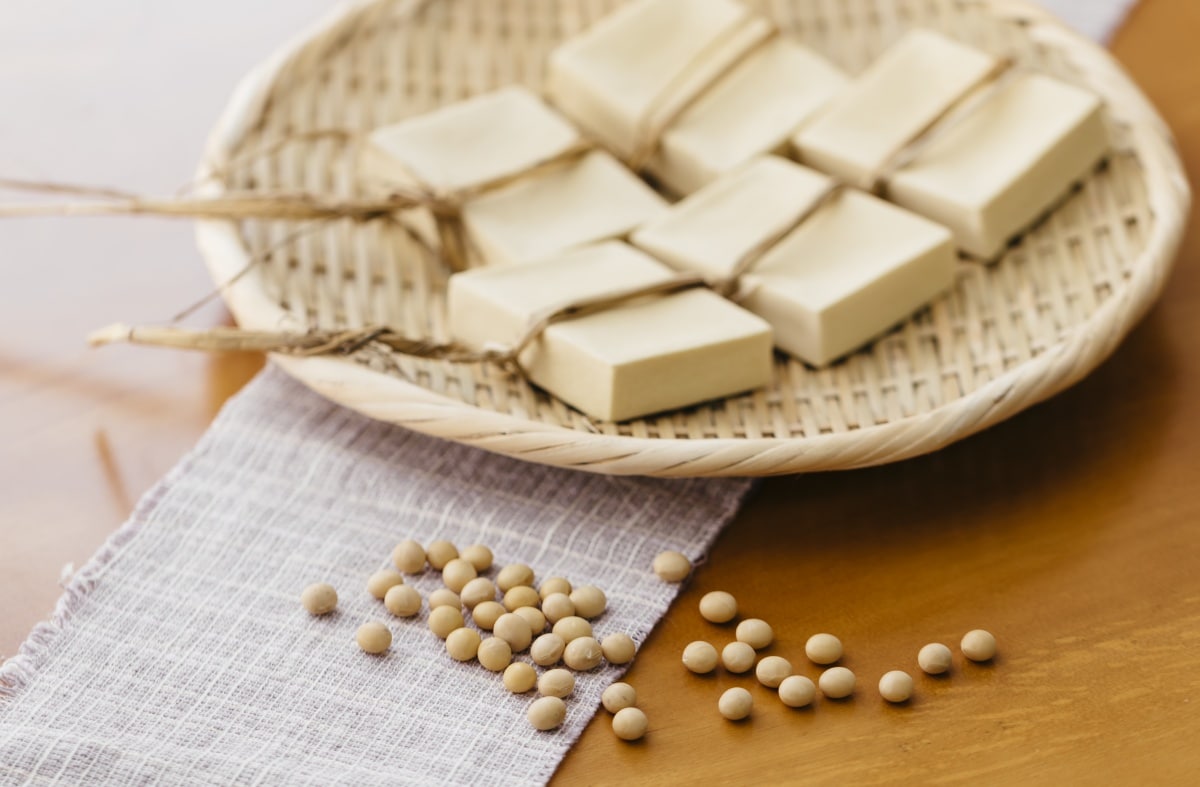
http://www.well-charle.jp/food/272/
Koyadofu (高野豆腐) can usually be found in the dried food section at supermarkets in the form of dry, brown-ish blocks. Its name comes from Mount Koya, where it was first invented to meet the needs of Buddhist monks, and it still is a staple of shojin ryori (traditional Buddhist vegetarian cuisine). Koyadofu is freeze-dried, making it possible to store it for a very long time: for this reason, it must be reconstituted in water before eating it. This tofu has a spongy texture and absorbs liquids very well, making it useful for soups and broths (for example, simmered in dashi stock or soy sauce).
'Yose' Tofu
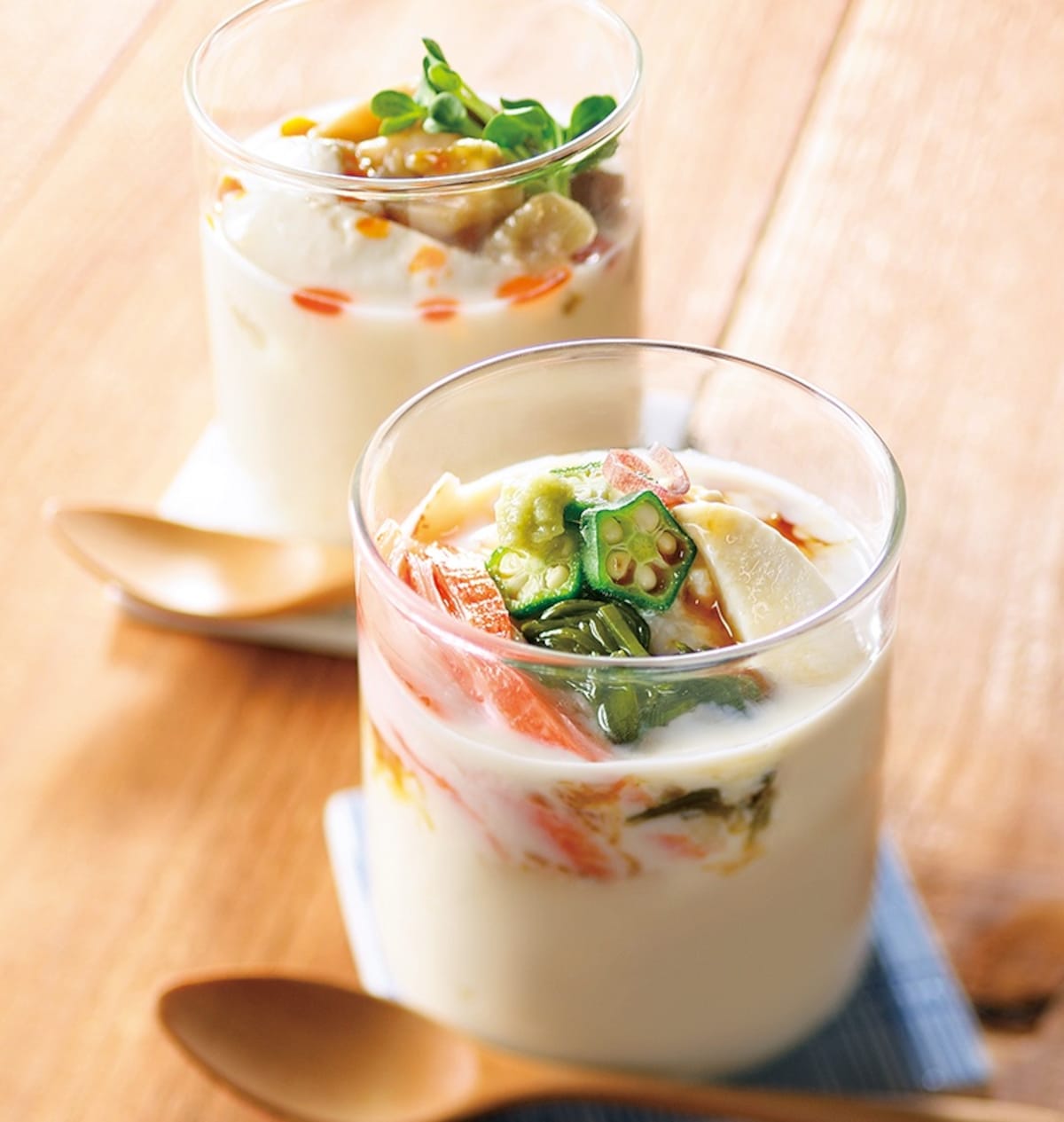
https://www.topvalu.net/items/detail/4902121290253/
In yose tofu (寄せ豆腐), also called oboro tofu (おぼろ豆腐), a coagulant agent is added to the tofu to give it its shape and no extra water is added. This tofu is then packaged still warm, retaining all its flavor given the lack of water. You can easily spot it at the supermarket since it's sold in smaller, usually round containers. It's often eaten as is, but it can also be used in soups.
'Tofuyo'
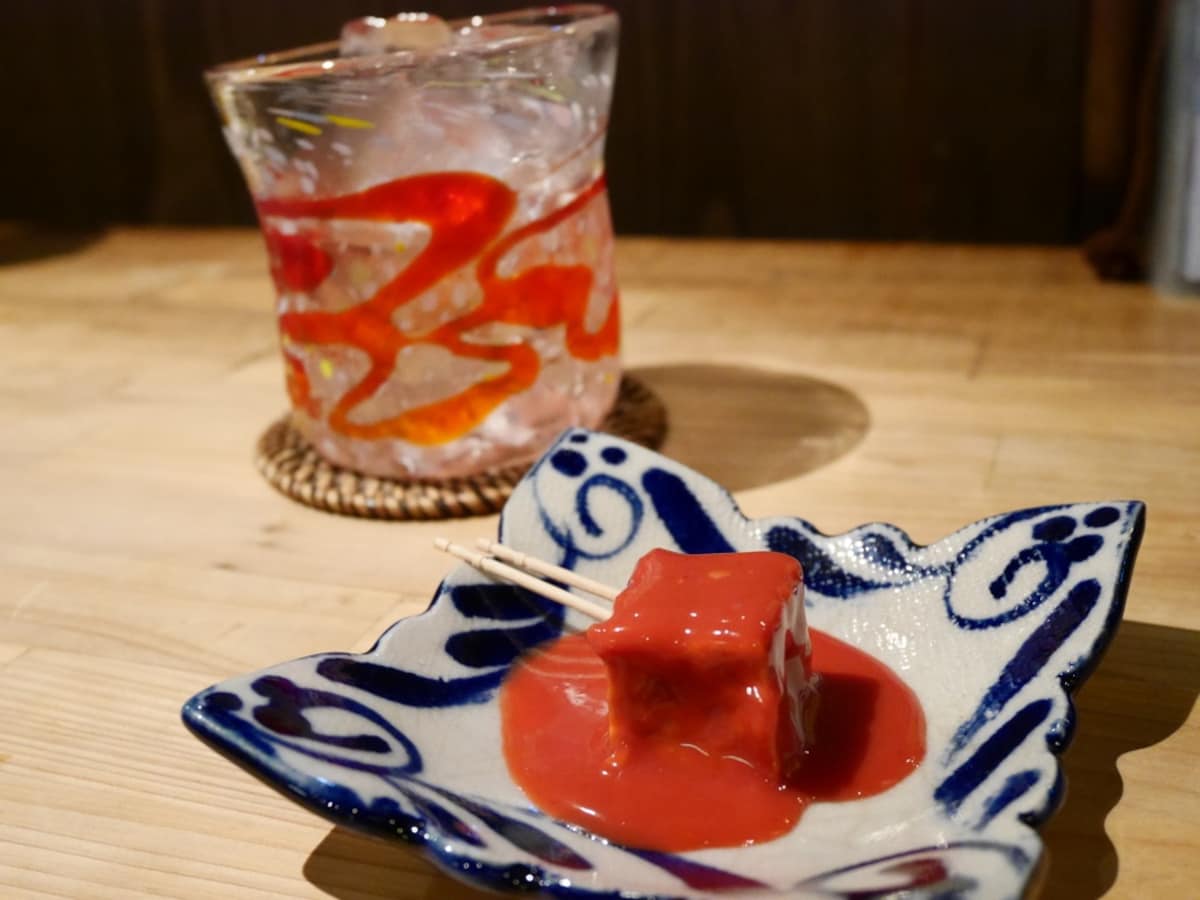
http://photohito.com/photo/4864027/
If you happen to be in Okinawa, you might come across a local specialty called tofuyo (豆腐餻 or 豆腐よう), which is usually served as a side dish to alcoholic drinks. In tofuyo, an Okinawan variety of firm tofu called shima tofu is fermented with koji mold, red koji mold and awamori (a typical Okinawan alcoholic beverage similar to shochu), giving it a very strong flavor and typically a red color. Shima tofu (島豆腐, literally "island tofu") can also be bought in many supermarkets and its usage is similar to that of momen tofu.
Flavored Tofu
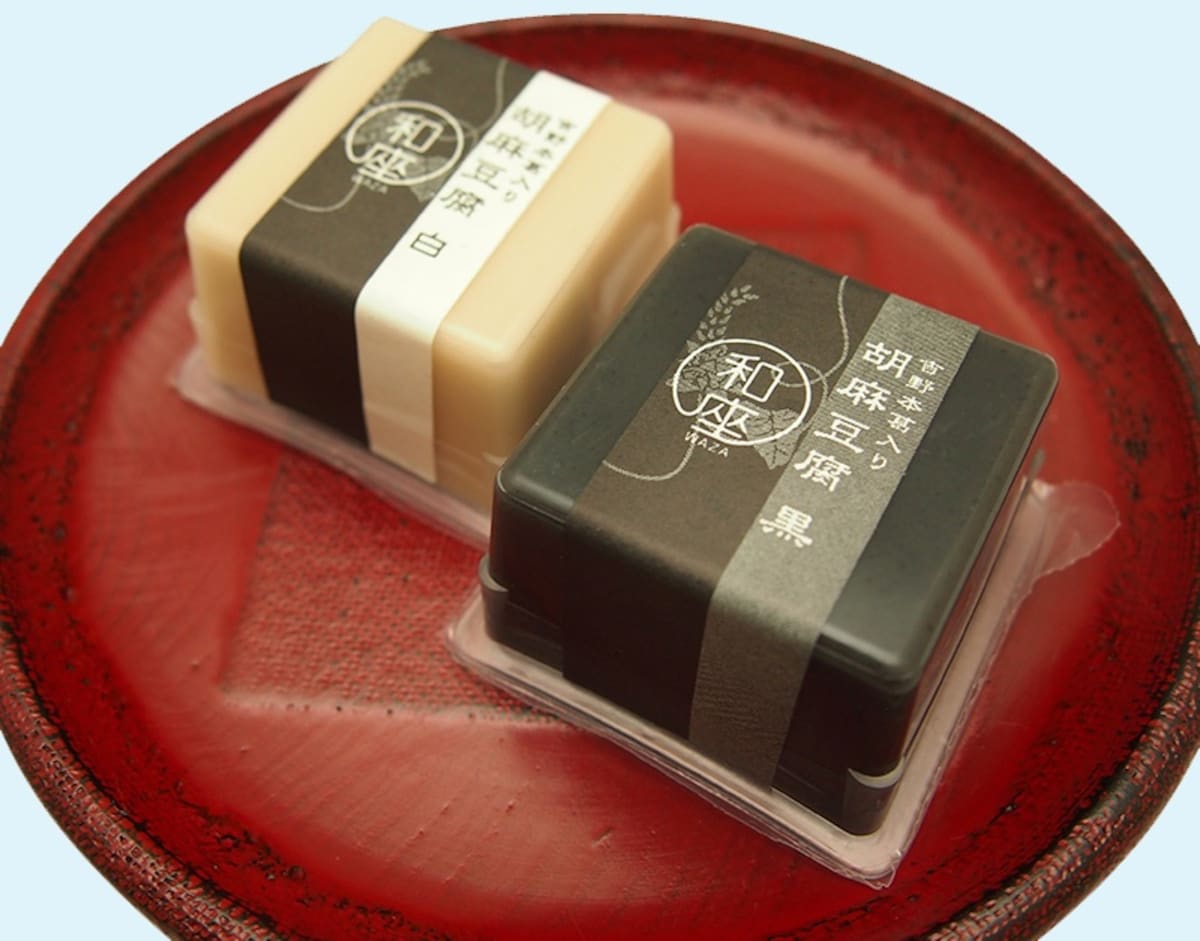
http://www.macdo.jp/product/MYK-0027.html?keepThis=true&TB_iframe=true&height=500&width=800
Japanese supermarkets might also sell tofu in various flavors. Among the most common, you can find peanut (ジーマーミ, jimami) and sesame (ごま, goma, which comes in black or white), but some supermarkets even sell products like edamame or avocado flavored tofu! These are usually eaten as is.
Tofu By-Products: Yuba & Okara
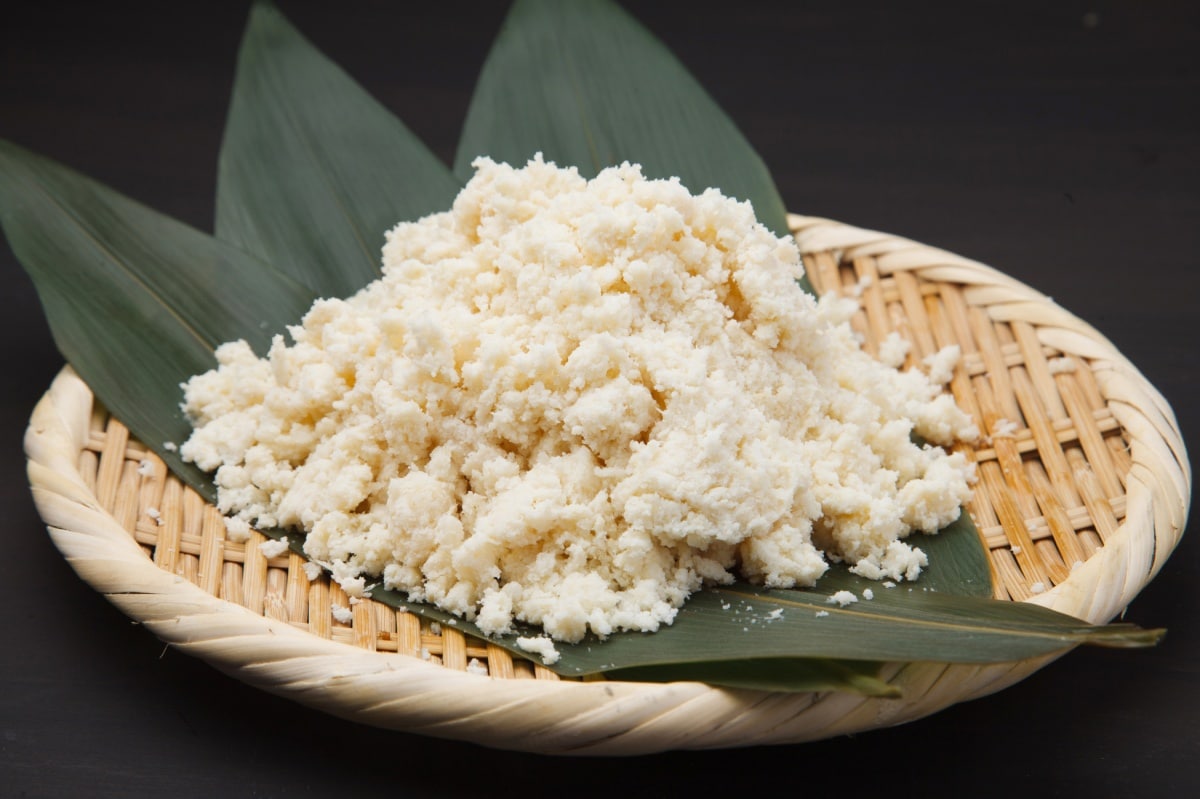
Finally, there are also some uniquely Japanese ingredients that come from the production of tofu.
'Yuba'
http://blog.livedoor.jp/soba_seeds/tag/%E6%B9%AF%E8%91%89%E8%B1%86%E8%85%90
The first one is yuba (湯葉), a specialty from Kyoto. Yuba is made from the skin that forms on the surface of soy milk when boiling in an open pan: this skin is skimmed off with a bamboo stick and rolled to be eaten fresh, or collected in sheets to be dried over a charcoal fire. Dry yuba has a soft and rubbery texture, and it's a good substitute for meat in vegetarian and vegan dishes. Fresh yuba is considered a delicacy and it’s usually served by itself, garnished with yuzu citrus juice, soy sauce or similar products. It's also high in protein, as a good 50 percent of it is made of a soy protein-lipid complex.
'Okara'
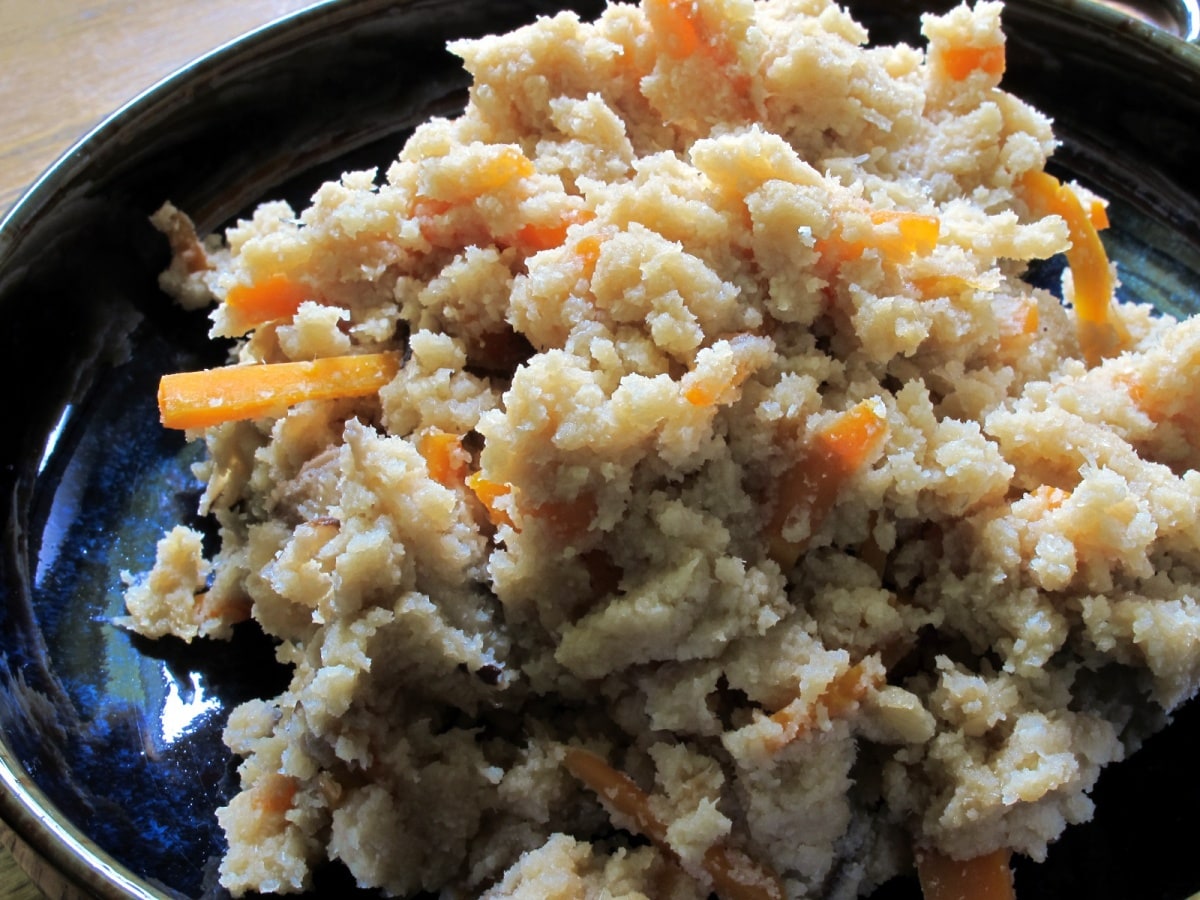
http://housewives-full-life.com/blog/?p=224
The second tofu by-product and last item on our list is okara (おから). Kara means husk in Japanese, and the "o" suffix is usually used for politeness or reverence. This might refer to the high level of nutrients in this product, which includes fibers, proteins and important minerals like iron. Okara can be translated as "soybean lees," and it's the pulp/curd that remains after pureed soybeans are filtered to produce soy milk or tofu. Fresh okara is difficult to preserve, so it's usually sold dry abroad.
Okara has a powdery texture without any particularly strong flavor, making it a versatile ingredient—it's often used for soy burger patties and in a typical Japanese dish called unohana (卯の花), where it's cooked together with soy sauce, mirin (a kind of rice wine used for cooking), carrots, burdock root and mushrooms. It can also be used in stew or porridges, or as an addition to baked goods like bread.




